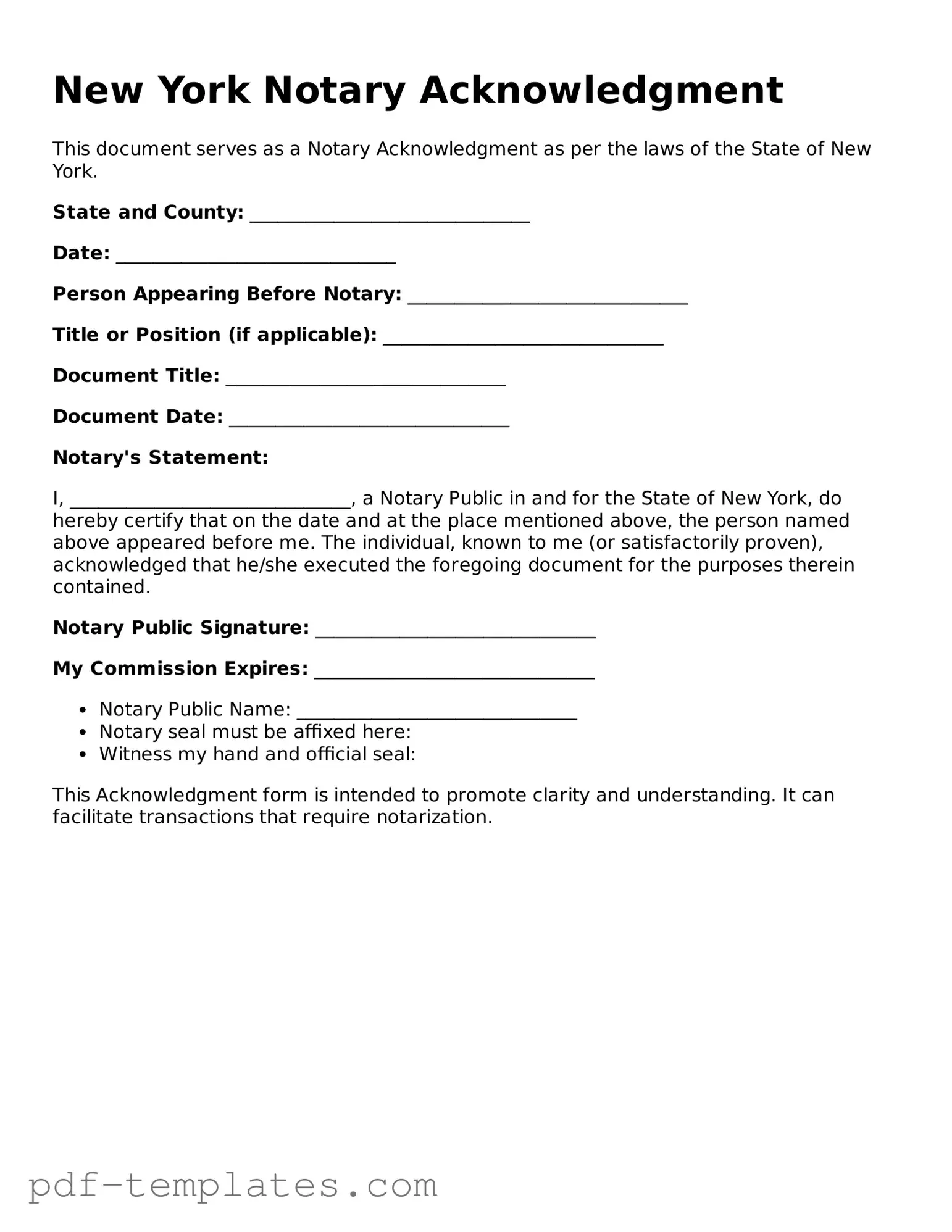The New York Affidavit is similar to the Notary Acknowledgment form in that both require a notary public to verify the identity of the signer. An affidavit is a written statement confirmed by oath or affirmation, making it a sworn document. This means that, like the acknowledgment, the signer must appear before the notary and provide proof of identity. Both documents serve to ensure that the information provided is truthful and can be relied upon in legal contexts.
The Power of Attorney form also shares similarities with the Notary Acknowledgment form. In this case, a person grants authority to another to act on their behalf. The notary’s role is crucial here as they must witness the signing of the document and verify the identity of the person granting the power. This adds a layer of protection and authenticity, similar to what is achieved with a notary acknowledgment.
The New York Deed is another document that requires notarization, much like the Notary Acknowledgment form. A deed is a legal document that transfers property ownership. When signing a deed, the parties involved must appear before a notary, who confirms their identities and witnesses the signing. This process helps prevent fraud and ensures that the transaction is legitimate, paralleling the purpose of the acknowledgment form.
The Lease Agreement often requires a notary acknowledgment, especially when it involves significant terms or conditions. A lease is a contract between a landlord and tenant, and notarizing it can provide additional security. The notary verifies the identities of both parties and confirms that they understand and agree to the terms, similar to the acknowledgment process that ensures the signer is willingly entering into an agreement.
The Bill of Sale, used to transfer ownership of personal property, often requires notarization as well. This document acts as proof of the transaction between the buyer and seller. A notary’s role is to verify the identities of both parties and to witness the signing, ensuring that the sale is legitimate and recognized legally, similar to the function of a notary acknowledgment.
The Certificate of Incorporation is a document that establishes a new corporation. Notarization is often required to authenticate the signatures of the incorporators. The notary confirms the identities of those signing the document, ensuring that the incorporation process is valid and legally binding. This is akin to the verification process in a notary acknowledgment.
In addition to these legal documents, it is important to understand the significance of a cease and desist letter form, which plays a crucial role in addressing disputes. This formal request compels individuals or entities to halt actions deemed unlawful, thus emphasizing the need for compliance before legal measures are taken. For more detailed information, you may refer to All Florida Forms, which provides resources to assist in the process.
Finally, the Wills and Trusts documents frequently require notarization to ensure their validity. A will is a legal declaration of a person's wishes regarding the distribution of their property after death. Notarization helps confirm the identity of the testator and ensures that the will was executed according to legal requirements. This process mirrors the notary acknowledgment, which serves to verify the authenticity of the signer's intent.
